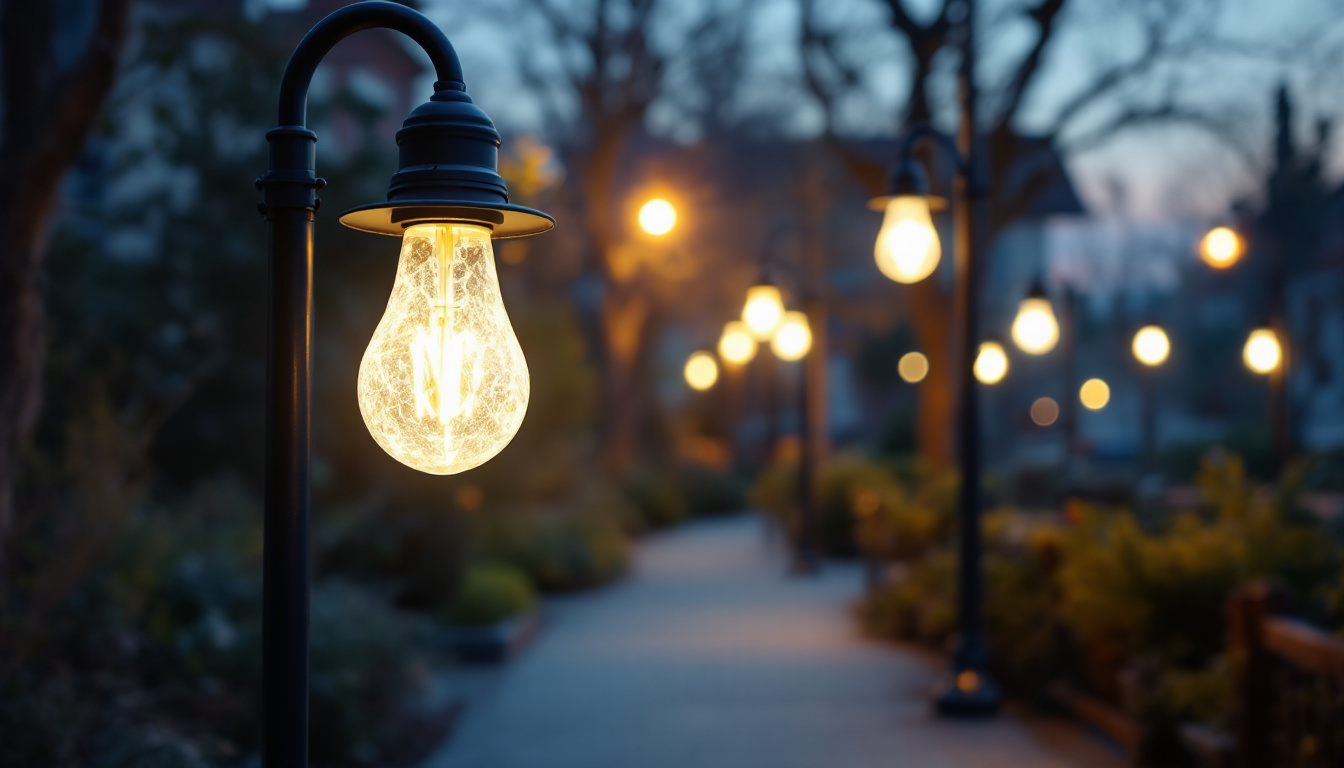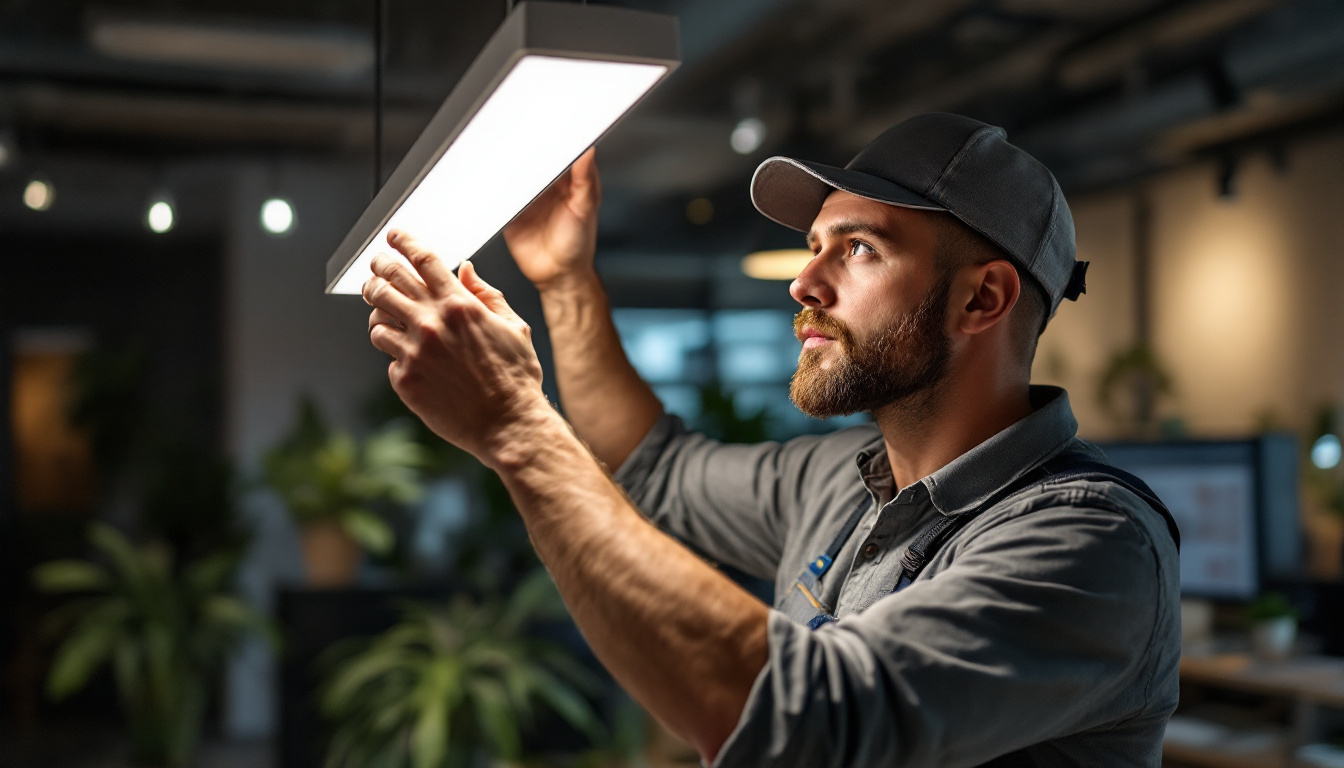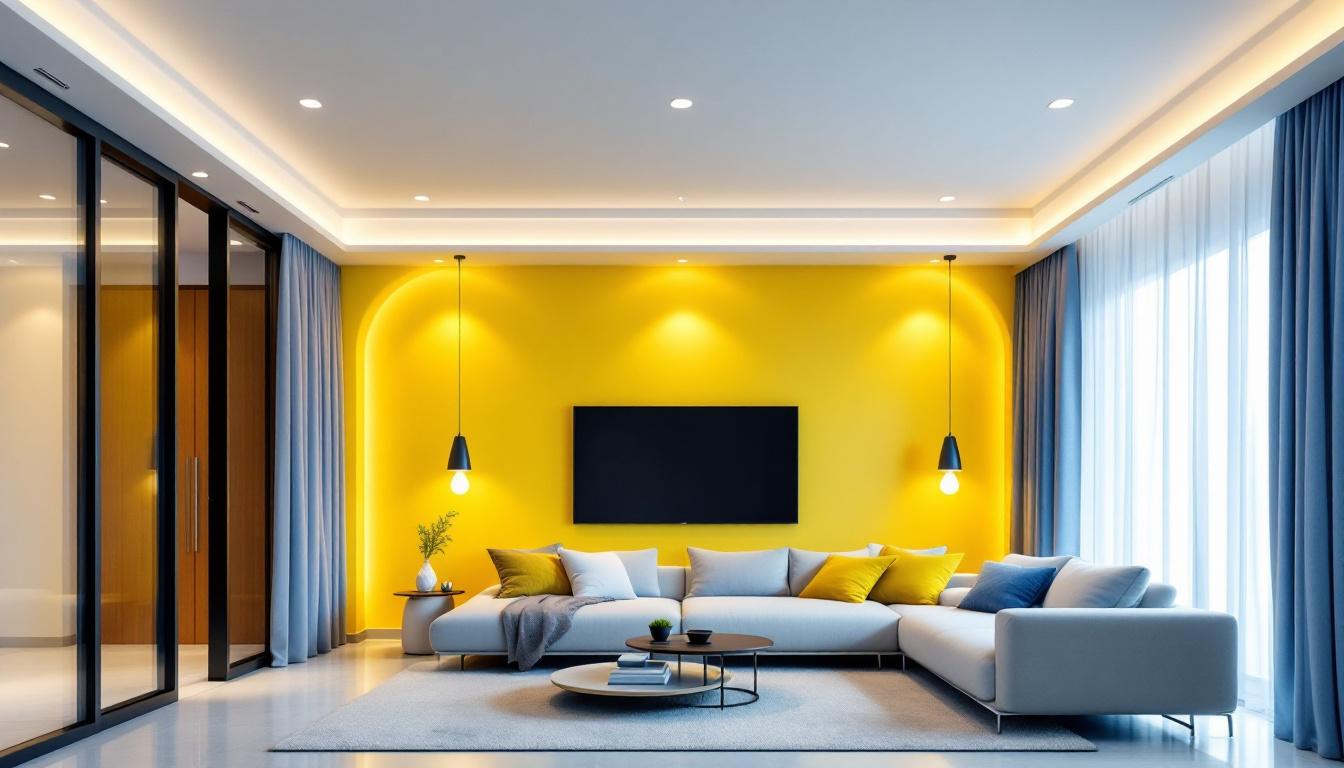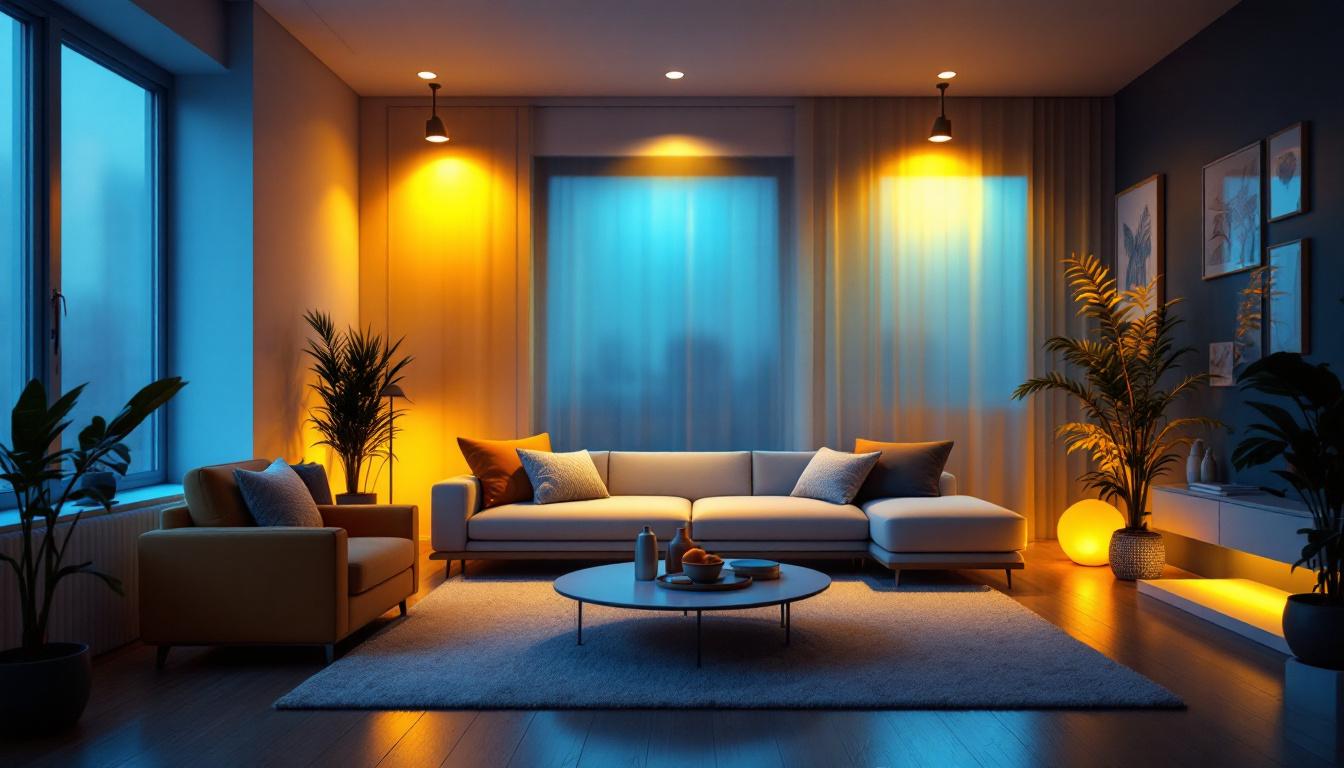
Lighting installations play a crucial role in ensuring safety across various environments, from residential spaces to commercial buildings. Among the various lighting options available, bulb lights stand out for their versatility and effectiveness. This article delves into how bulb lights enhance safety in lighting installations, focusing on their benefits, applications, and best practices for implementation.
Bulb lights, commonly referred to as light bulbs, are essential components in lighting systems. They come in various shapes, sizes, and technologies, including incandescent, fluorescent, LED, and halogen. Each type has unique characteristics that can influence safety in different settings. For instance, the choice of bulb can affect not only the quality of light but also energy consumption and heat generation, which are critical factors in both residential and commercial environments.
One of the primary functions of bulb lights is to provide illumination. Adequate lighting is vital for visibility, which directly impacts safety. Poorly lit areas can lead to accidents, injuries, and even criminal activities. Therefore, selecting the right type of bulb light is essential for creating a safe environment. Furthermore, the color temperature of the light can influence mood and productivity; warmer tones are often preferred in living spaces to create a cozy atmosphere, while cooler tones are favored in workspaces to enhance focus and alertness.
Different types of bulb lights serve various purposes and offer distinct advantages. Understanding these types can help contractors make informed decisions when planning lighting installations. For example, the choice between LED and fluorescent bulbs can significantly impact long-term operational costs, as LEDs, despite a higher initial investment, offer substantial savings through reduced energy consumption and longer lifespans.
Bulb lights contribute to safety in various ways. From preventing accidents to deterring criminal activity, the right lighting can significantly improve the security of any space.
One of the most direct ways bulb lights enhance safety is by improving visibility. Well-lit areas allow individuals to see their surroundings clearly, reducing the likelihood of accidents. This is particularly important in high-traffic areas, stairways, and parking lots.
Inadequate lighting can create shadows and blind spots, making it difficult for people to navigate safely. By strategically placing bulb lights, contractors can ensure that all areas are sufficiently illuminated, thereby minimizing risks associated with poor visibility. Furthermore, the use of LED bulb lights can provide a brighter, more energy-efficient solution that not only enhances safety but also reduces energy costs over time. These lights can be designed to emit a spectrum of light that mimics natural daylight, which can improve visibility even further and create a more inviting atmosphere.
Effective lighting is a powerful deterrent against criminal activity. Well-lit spaces are less appealing to potential intruders, as they increase the likelihood of being seen. This is why many security experts recommend installing bright, motion-activated bulb lights around the perimeter of buildings.
Moreover, the presence of bulb lights can foster a sense of security among residents and employees. When individuals feel safe in their environment, they are more likely to engage in daily activities without fear, contributing to overall community well-being. The strategic use of smart lighting systems can further enhance this effect; these systems can be programmed to adjust brightness levels based on the time of day or occupancy, ensuring that areas remain well-lit when needed while conserving energy during quieter hours. This adaptability not only bolsters safety but also promotes sustainability within communities.
In emergencies, such as power outages or natural disasters, reliable lighting becomes even more critical. Bulb lights can be integrated with backup systems to ensure that essential areas remain illuminated during crises. This can aid in evacuation efforts and enhance the safety of individuals trying to navigate through potentially hazardous situations.
Additionally, installing emergency exit signs equipped with bulb lights can guide people safely out of buildings during emergencies. These signs must be visible and well-placed to effectively direct individuals to safety. Beyond just exit signs, incorporating illuminated pathways and emergency lighting in hallways can further facilitate safe movement during chaotic events. In some cases, advanced lighting systems can even be linked to alarm systems, automatically illuminating escape routes when an emergency signal is triggered, thereby providing an additional layer of safety and reassurance for occupants. This proactive approach to lighting not only enhances immediate safety but also instills confidence in the preparedness of a facility or community in the face of unforeseen events.
To maximize the safety benefits of bulb lights, contractors should adhere to best practices during installation. These practices ensure that lighting systems are effective, efficient, and safe.
Selecting the appropriate type of bulb is crucial for safety and efficiency. For instance, LED bulbs are often recommended for outdoor installations due to their durability and energy efficiency. They can withstand harsh weather conditions while providing consistent illumination.
In indoor settings, contractors should consider the specific needs of each area. For example, warm white LED bulbs may be suitable for residential spaces, while brighter, cooler bulbs may be necessary for commercial environments.
The placement of bulb lights can significantly impact their effectiveness. It is essential to identify areas that require illumination, such as entryways, hallways, and staircases. Proper placement ensures that light reaches all corners of a space, reducing shadows and enhancing visibility.
Additionally, using motion sensors can optimize energy use while maintaining safety. These sensors activate lights when movement is detected, ensuring that areas remain illuminated when needed without wasting energy when unoccupied.
Regular maintenance is vital to ensure that bulb lights function correctly. Burned-out bulbs should be replaced promptly, as even a single non-functioning light can create dark spots that compromise safety. Contractors should also consider upgrading older lighting systems to more energy-efficient options, such as LEDs, which offer longer lifespans and lower energy costs.
Conducting routine inspections can help identify potential issues before they escalate. This proactive approach not only enhances safety but also extends the lifespan of the lighting system.
As technology continues to evolve, so do the options available for bulb lights. Innovations in lighting technology can further enhance safety in installations.
Smart lighting systems allow for greater control over lighting environments. These systems can be programmed to adjust brightness based on time of day or occupancy, ensuring that spaces are adequately lit when needed.
Moreover, smart bulbs can be integrated with security systems, providing real-time alerts when motion is detected. This added layer of security can be invaluable in preventing unauthorized access and enhancing overall safety.
Energy efficiency is a growing concern in lighting design. Newer bulb technologies, such as LED and compact fluorescent bulbs, consume significantly less energy than traditional incandescent bulbs. This not only reduces energy costs but also lowers the risk of overheating and fire hazards associated with older lighting technologies.
By opting for energy-efficient designs, contractors can contribute to sustainability while ensuring that safety remains a top priority.
Adaptive lighting systems are designed to respond to environmental changes. For example, these systems can adjust brightness based on available natural light or the presence of individuals in a space. This adaptability ensures optimal lighting conditions, enhancing safety and comfort for users.
Such systems can be particularly beneficial in areas with fluctuating light conditions, such as parking lots or outdoor pathways, where visibility is crucial for safety.
Bulb lights play a vital role in enhancing safety in lighting installations. By improving visibility, deterring criminal activity, and ensuring preparedness for emergencies, these lights contribute significantly to creating secure environments. Contractors must consider the type, placement, and maintenance of bulb lights to maximize their effectiveness.
As technology advances, innovative solutions such as smart lighting and energy-efficient designs offer exciting opportunities to further enhance safety in lighting installations. By staying informed about these developments, contractors can provide safer, more efficient lighting solutions for their clients.
Ultimately, prioritizing safety in lighting design not only protects individuals but also fosters a sense of community and well-being. With the right approach, bulb lights can illuminate spaces and enhance safety for everyone.
Ready to elevate your lighting installations with safety, efficiency, and unmatched value? Look no further than LumenWholesale. Our extensive range of spec-grade lighting products is designed to meet your every need, ensuring you can create secure and welcoming environments with ease. Say goodbye to inflated markups and hello to premium quality at wholesale prices, complete with the convenience of free shipping on bulk orders. Don’t compromise on safety or value—choose LumenWholesale for your next project. Discover our selection and take advantage of the best lighting deals by visiting Wholesale Lighting at the Best Value today.

Discover expert tips and strategies for lighting contractors to master the installation and optimization of 4′ LED light fixtures.

Discover how to choose the best recessed lighting bulbs to ensure your lighting projects stand the test of time.

Discover the key advantages of benchtop lighting for contractors in this insightful article.

Discover how 13W equivalent LED bulbs can revolutionize your lighting designs, offering energy efficiency, enhanced brightness, and versatile applications for any space.